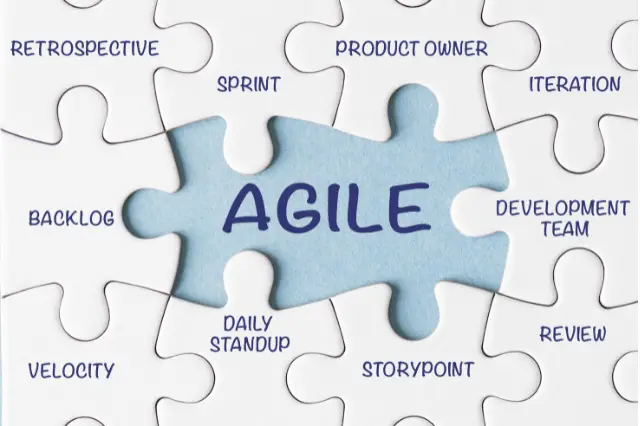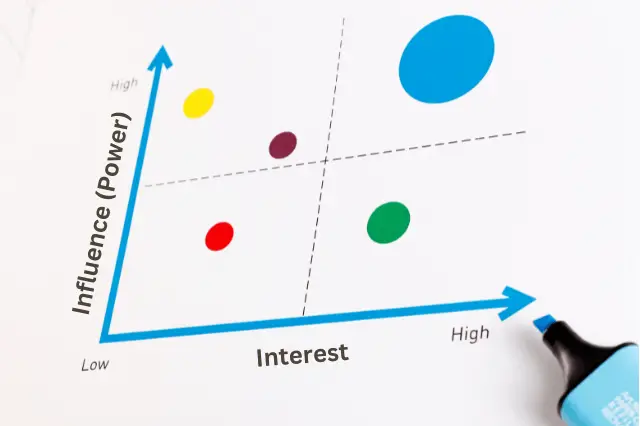Last Updated on November 4, 2024 by andrewshih
In project management, team dynamics are essential to a project’s success. Teams don’t start out functioning at their peak – they evolve.
Bruce Tuckman introduced a model in 1965 that explains this evolution. Understanding this model allows project managers to lead teams effectively, resolve conflicts, and guide them toward higher productivity.
This guide explains Tuckman’s Model, breaks down its stages, and provides practical tips for project managers to apply at each stage for better results.
What is Tuckman’s Model of Team Development?
Tuckman’s Model, also called the Tuckman Ladder, outlines five stages that teams go through as they develop. These stages are:
- Forming
- Storming
- Norming
- Performing
- Adjourning
Project managers can use this model to better understand team dynamics and adjust their leadership approach at each phase.
The Five Stages of Tuckman’s Model
Forming Stage: Laying the Foundation for Team Success
In the Forming stage, the team is just starting to come together. Team members are often enthusiastic but uncertain about their roles. Interactions tend to be polite but cautious, as members focus on avoiding conflict and getting to know one another.
Characteristics:
- Team members are polite but unsure of their roles.
- Interactions are friendly but tentative.
- Team members depend heavily on the project manager for direction.
Project Manager’s Role:
- Set clear expectations and define each member’s role early on.
- Facilitate introductions and help team members get to know one another.
- Provide structure and guide the team toward shared goals.
At this stage, it’s crucial for the project manager to build a solid foundation by offering clear direction and fostering open communication. The goal is to create an environment where the team can start building trust and collaboration.
Storming Stage: Navigating Conflict and Challenges
The Storming stage is often the most challenging. Team members begin to assert their ideas, which may lead to conflicts. Some team members may question authority, resist tasks, or challenge the project manager’s decisions. Tensions rise as different working styles and opinions clash.
Characteristics:
- Disagreements arise as team members express different viewpoints.
- Tensions and conflicts over roles and authority are common.
- Team members may experience frustration as they struggle to collaborate effectively.
Project Manager’s Role:
- Act as a mediator, addressing conflicts openly and constructively.
- Encourage honest communication and help the team resolve disagreements.
- Reinforce the project’s objectives and clarify roles when needed.
In this phase, the project manager must guide the team through their conflicts. With the right support, teams can emerge from the Storming stage stronger and more unified.
Norming Stage: Building Team Cohesion and Collaboration
In the Norming stage, the team begins to find its footing. Conflicts are resolved or minimized, and team members start to understand and appreciate each other’s strengths. They collaborate more effectively and develop a stronger sense of unity and trust.
Characteristics:
- Improved cooperation and communication.
- Conflicts are resolved, and the team becomes more cohesive.
- Team members start focusing more on achieving project goals.
Project Manager’s Role:
- Encourage continued collaboration and open communication.
- Provide feedback and recognition to reinforce positive behaviors.
- Support team-building efforts to maintain trust and cooperation.
At this stage, the project manager should act as a coach, fostering the team’s growing independence while reinforcing the positive behaviors that lead to successful teamwork.
Performing Stage: Achieving High Performance and Productivity
By the Performing stage, the team is functioning at its highest level. Roles are clearly defined, and team members work together seamlessly. They can handle challenges with little direction from the project manager, who can now focus on long-term goals and remove any roadblocks that might hinder performance.
Characteristics:
- High productivity and strong collaboration.
- Team members work with minimal supervision.
- The team effectively resolves conflicts on its own.
Project Manager’s Role:
- Delegate responsibilities and trust the team to make decisions.
- Focus on removing obstacles that may slow the team down.
- Recognize and celebrate the team’s successes to keep morale high.
At this point, the project manager can take a step back and allow the team to work independently, providing support only when necessary.
Adjourning Stage: Bringing Closure and Celebrating Success
The Adjourning stage occurs when the project ends and the team disbands. Team members may feel a sense of loss as they transition to new roles or projects, but this stage also provides an opportunity to reflect on their accomplishments.
Characteristics:
- The project wraps up, and the team disbands or transitions to new projects.
- Team members may feel uncertain or reflective as they move on.
- There may be celebrations to mark the project’s success.
Project Manager’s Role:
- Facilitate closure activities like lessons learned sessions and final project reviews.
- Recognize and celebrate the team’s accomplishments.
- Help team members transition to new projects or roles.
In this phase, the project manager helps ensure that the team leaves the project on a high note, feeling proud of their contributions.
How Project Managers Can Apply Tuckman’s Model
Project managers can apply Tuckman’s Model by adjusting their leadership approach based on the team’s stage. For example:
- In the Forming stage, the project manager provides more structure and clear direction.
- During Storming, the focus shifts to conflict resolution.
- In Norming, the project manager reinforces collaboration and teamwork.
- By the Performing stage, the team operates independently, allowing the project manager to step back and delegate more.
Understanding these stages enables project managers to provide the right support at the right time, leading to better outcomes.
Tuckman’s Model in Agile and Hybrid Environments
In Agile environments, where self-organizing teams are common, Tuckman’s Model helps project managers and Scrum Masters guide teams to autonomy. As teams reach the Performing stage, they operate with minimal intervention.
In hybrid environments, where both traditional and Agile approaches mix, the project manager may need to switch between hands-on guidance during the Forming and Storming stages and a more facilitative role during Norming and Performing.
Preparing for the PMP Exam with Tuckman’s Model
For PMP exam candidates, Tuckman’s Model is important for questions related to team development and conflict management.
Expect scenario-based questions that test your understanding of the different stages.
You should be able to identify the stage a team is in and know which leadership strategies to apply, especially during the Storming phase where conflict resolution is critical.



